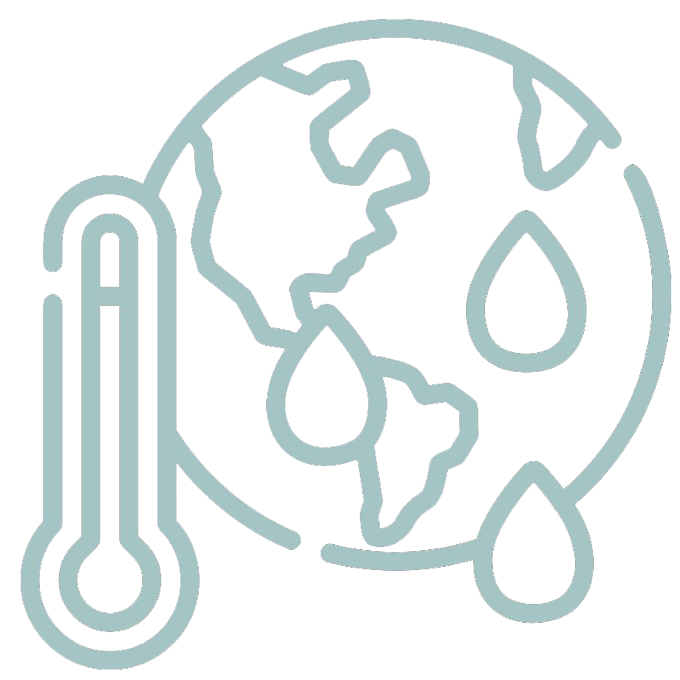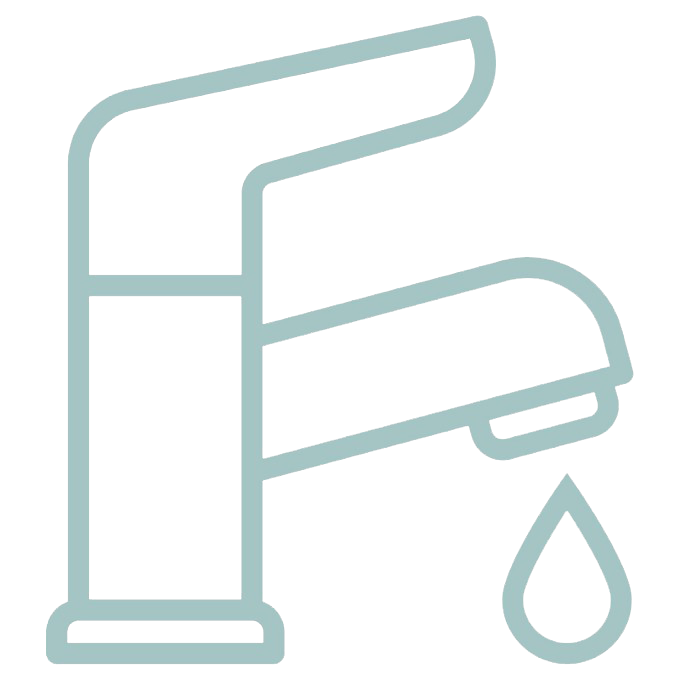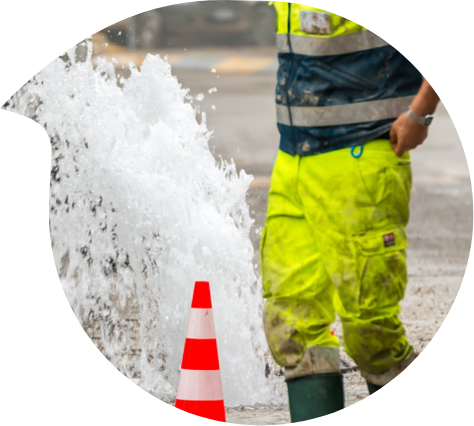- Designing, building and maintaining dams, pipelines, water towers, etc.
- Building machines and equipment such as pumps, smart meters, etc.
- Private and industrial water filtration and treatment
- Quality control
- Leak detection, desalination, water-saving toilets and shower controls, etc.
- Production
- Distribution
1 Structural shortage of drinking water creates a need for investments

Drinking water is scarce and not equally distributed

Our consumption is high

70% of global water consumption is used in agriculture and stock farming; industry uses 20%, while 10% ends up in our domestic taps. On average, each of us consumes more than 100 litres of water per day.
Demand is increasing

There are more of us. That also means more of us to consume water. The global population is projected to grow by around two billion by 2050, to almost 10 billion.
On top of that, water consumption is rising twice as fast as population growth, because our living standards are also rising. That is a particularly significant factor in emerging countries such as India and China. More households are gaining access to basic comforts such as a shower, toilet, washing machine, etc. And they are also consuming more: think of smartphones, cars, etc.: their production processes also consume thousands of litres of water.
The supply is declining


Environment and climate
Deforestation and urbanisation destroy the ecosystems that are crucial for groundwater replenishment. In combination with global warming and excessive usage, this is steadily exhausting the global water reserves.
At the same time deforestation, urbanisation and paving also increase the risk of flooding. Investing in space for water and in softening is therefore an investment in less water problems.

Pollution
Pollution damages natural water sources : 80% of Chinese rivers are so polluted that they can no longer sustain life. Worldwide, only 20% of waste-water is treated and recycled.

Old, leaky infrastructure
Maintaining water infrastructure costs a lot of money and was readily deferred in the past. In the US, 23 billion litres of drinking water are lost through leakage every day. In Flanders, the figure is 180 million litres.
More investments are needed

To bridge the gap between supply and demand, we not only need to use water more responsibly. It is also crucial to invest. As a result of climate change, we will have to contend with more extreme weather conditions. To bridge periods of drought, but also to counteract flooding during periods of heavy rainfall, investments are needed in extra space to store water, such as in buffer and waiting basins, infiltration wells and cisterns.
According to research by McKinsey, no less than 11 700 billion USD is needed for investments in infrastructure in order to meet the demand for water by 2030.
2 Stable revenue growth translates into solid potential for investments

The shortage of drinking water, the need to maintain and expand infrastructure, and higher standards for water quality, create stable turnover growth for water companies. This turnover growth in turn translates into solid earnings growth and explains their strong performance on the stock markets over the last ten years.
The current problems in the supply chains in the semiconductor sector offer an additional opportunity. The demand for chips in just about everything, from cars to computer games or electric toothbrushes, has increased worldwide. Capacity must be increased. The production of semiconductors involves the use of pure water. Companies that are active in the process of clean water stand to benefit from this.
Investing in water is partly cyclical and partly non-cyclical. Water infrastructure, for example, is highly cyclical. When the economy is doing well, more houses are built, public investment increases and companies make bigger investments in maintenance and expansion. The recovery of economic growth after the coronavirus crisis, combined with extra government investments, should provide a stimulus for these companies.
Companies active in areas such as testing water quality or water treatment are less dependent on the economic cycle. They often operate in niche markets, and boast strong balance sheets and high liquidity.
Demand for water will always be there, whatever happens, creating an endless growth narrative for water companies.
3 Investing in responsible companies contribute for a better future

The number of companies fighting the problems connected to water resources is growing fast. Their expertise and innovations provide solutions that are extremely important and which contribute for a better future.
What future is your money working for?
You could also help by investing in innovative companies like these with KBC ECO Fund Water. You would help with the coping of this serious world problem and at the same time you become a part of this fast growing sector.
Did you know that...?
... there is music in leak detection technology
‘Acoustic monitoring‘ helps detect expensive leaks in pipelines and thus water losses. Special equipment is used at night to listen for ‘leakage sounds’ or vibrations. These acoustic monitors are generally used in conjunction with smart meters. The data is collected, forwarded and analysed. This makes it easy to establish the physical location of a leak, enabling repairs to be carried out faster and more efficiently.

The information provided in this document does not constitute advice or recommendation for investing in financial instruments and should not be interpret as such. No profits are guaranteed and there is a risk for investors not to restore the full amount invested. It is recommended for investors to become carefully acquainted with the nature of the financial instruments and to determine their investment goals and their willingness to take risks before making an investment decision. Additional information about the risks can be found at the bank's branches or here.





























